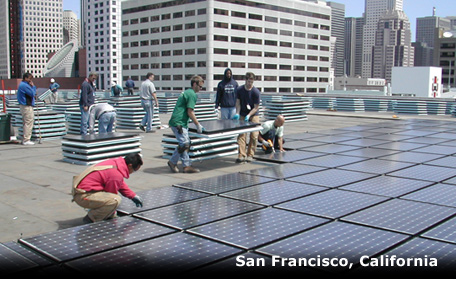Vote Solar refutes CA utilities’ allegations that rooftop solar costs customers
 Last week a Bloomberg article cited California’s major utilities as contending that rooftop and distributed solar will cost California electric customers billions. “Not so!” said Solar advocacy group Vote Solar. The group came out with a sharp criticism of the article earlier this week. At the heart of the issue is the amount that utilities are paying distributed generators or net-metered customers for the electricity that they put on the grid.
Last week a Bloomberg article cited California’s major utilities as contending that rooftop and distributed solar will cost California electric customers billions. “Not so!” said Solar advocacy group Vote Solar. The group came out with a sharp criticism of the article earlier this week. At the heart of the issue is the amount that utilities are paying distributed generators or net-metered customers for the electricity that they put on the grid.
The Bloomberg article contended that distributed solar was costing California’s electric providers $1.3 billion annually. Vote Solar argued that in making such a claim, California’s Investor-owned utilities were misstating their estimates of how much they were paying their net-metered customer generators. When utilities make such claims, they are claiming that all their net-metered customers are being paid the top-tier rate for electricity their systems put back on the grid, according to Susannah Churchill, Vote Solar’s California policy advocate. “Utilities make the big inflated cost claims and they don’t explain the math behind it,” she said. For instance, she said the retail rate that Pacific Gas and Electric has claimed it pays net-metered customers is more than 31 cents per kilowatt hour generated.
In reality, “Different customers are being charged different average retail rates,” Churchill said. Homeowners with systems smaller than commercial or institutional systems pay less per kilowatt hour and are credited less for the power they put back on the grid. In some cases, more like 22.5 cents per kilowatt hour, she said.
Since the net-metered customers in California are paid full retail rate for energy they put back on the grid, they are also receiving credit on that electricity for transmission and other costs. “Utilities are claiming that in part of that credit there are some fixed costs in there that the net-metered customer is not paying,” Churchill said. “The fact is there are some benefits they’re [i.e., utilities are] not paying for. They’re avoiding buying expensive, on-peak energy, reducing need to invest in transmission, and reducing line losses that happen,” she said.



